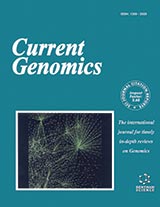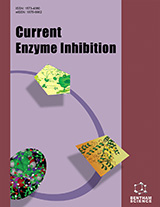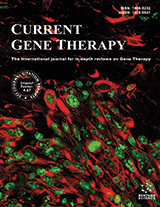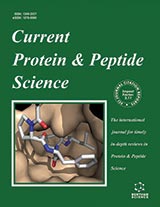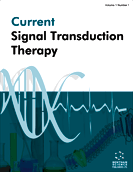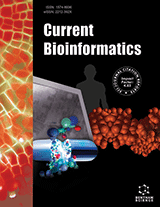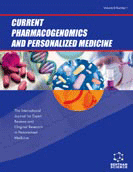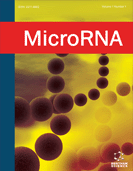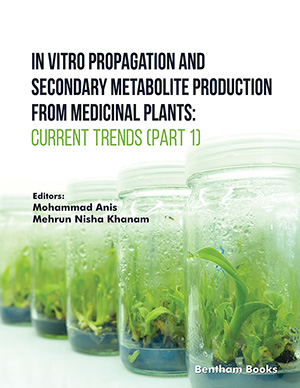Abstract
The development, refinement and increasingly widespread use of high-density DNA microarrays have been important responses to the explosion of sequence information produced by genome science. Principal among the application of microarrays is the large-scale analysis of gene expression, often referred to as expression profiling. The power of this application lies in its ability to determine the expression patterns of thousands of genes in a single experiment. Microarray use is becoming widespread in many biomedical research fields, including the study of carcinogenesis, in which expression profiling has found a number of important applications. Broadly speaking, these applications can be described as gene and pathway discovery, gene functional assignment, and tumor classification. A number of early gene expression studies using tumor cell lines and tumors have shown that DNA microarrays are powerful tools, both for identifying new genes and assigning roles to known genes involved in carcinogenesis as well as for classifying tumors subtypes. In this review, we describe the major types of DNA microarrays, discuss some practical considerations for their use, and present examples of how they are being applied to the investigation of cancer.
Keywords: dna microarray, oligonucleotide microarray
Current Genomics
Title: The Application of DNA Microarrays to the Study of Cancer
Volume: 3 Issue: 4
Author(s): K. Harshman and M. Sanchez-Carbayo
Affiliation:
Keywords: dna microarray, oligonucleotide microarray
Abstract: The development, refinement and increasingly widespread use of high-density DNA microarrays have been important responses to the explosion of sequence information produced by genome science. Principal among the application of microarrays is the large-scale analysis of gene expression, often referred to as expression profiling. The power of this application lies in its ability to determine the expression patterns of thousands of genes in a single experiment. Microarray use is becoming widespread in many biomedical research fields, including the study of carcinogenesis, in which expression profiling has found a number of important applications. Broadly speaking, these applications can be described as gene and pathway discovery, gene functional assignment, and tumor classification. A number of early gene expression studies using tumor cell lines and tumors have shown that DNA microarrays are powerful tools, both for identifying new genes and assigning roles to known genes involved in carcinogenesis as well as for classifying tumors subtypes. In this review, we describe the major types of DNA microarrays, discuss some practical considerations for their use, and present examples of how they are being applied to the investigation of cancer.
Export Options
About this article
Cite this article as:
Harshman K. and Sanchez-Carbayo M., The Application of DNA Microarrays to the Study of Cancer, Current Genomics 2002; 3 (4) . https://dx.doi.org/10.2174/1389202023350372
| DOI https://dx.doi.org/10.2174/1389202023350372 |
Print ISSN 1389-2029 |
| Publisher Name Bentham Science Publisher |
Online ISSN 1875-5488 |
Call for Papers in Thematic Issues
Advanced AI Techniques in Big Genomic Data Analysis
The thematic issue on "Advanced AI Techniques in Big Genomic Data Analysis" aims to explore the cutting-edge methodologies and applications of artificial intelligence (AI) in the realm of genomic research, where vast amounts of data pose both challenges and opportunities. This issue will cover a broad spectrum of AI-driven strategies, ...read more
Applications of Single-cell Sequencing Technology in Reproductive Medicine
Single cell sequencing (SCS) technology utilizes individual cells' genetic material to sequence their genome, transcriptome, and epigenetics at the molecular level. It offers insights into cell heterogeneity and enables the study of limited biological materials. Since its recognition as a valuable technique in 2011, single cell sequencing has yielded numerous ...read more
Current Genomics in Cardiovascular Research
Cardiovascular diseases are the main cause of death in the world, in recent years we have had important advances in the interaction between cardiovascular disease and genomics. In this Research Topic, we intend for researchers to present their results with a focus on basic, translational and clinical investigations associated with ...read more
Deep learning in Single Cell Analysis
The field of biology is undergoing a revolution in our ability to study individual cells at the molecular level, and to integrate data from multiple sources and modalities. This has been made possible by advances in technologies for single-cell sequencing, multi-omics profiling, spatial transcriptomics, and high-throughput imaging, as well as ...read more
Related Journals
 8
8
- Author Guidelines
- Graphical Abstracts
- Fabricating and Stating False Information
- Research Misconduct
- Post Publication Discussions and Corrections
- Publishing Ethics and Rectitude
- Increase Visibility of Your Article
- Archiving Policies
- Peer Review Workflow
- Order Your Article Before Print
- Promote Your Article
- Manuscript Transfer Facility
- Editorial Policies
- Allegations from Whistleblowers
- Announcements
Related Articles
-
Comparative Genomic Hybridization: A Valuable Tool for Genome-Scale Analysis of Rodent Cancer Models
Current Genomics CD95 Signaling in Cancer Treatment
Current Pharmaceutical Design Anti-Cancer Therapy: Targeting the Mevalonate Pathway
Current Cancer Drug Targets Tumor Stroma Manipulation By MSC
Current Drug Targets A Progressive Review of V600E-B-RAF-Dependent Melanoma and Drugs Inhibiting It
Mini-Reviews in Medicinal Chemistry Wnt Signaling in Rhabdomyosarcoma – A Potential Targeted Therapy Option
Current Drug Targets One Hundred Faces of Cyclopamine
Current Pharmaceutical Design CXCL12-CXCR4 Axis in Angiogenesis, Metastasis and Stem Cell Mobilization
Current Pharmaceutical Design Editorial (Thematic Issue: Embryonic Signaling Pathways as Potential Targets for the Treatment of Rhabdomyosarcoma)
Current Drug Targets Signal Transducer and Activator of Transcription 3 Signaling Pathway: A Potential Target in Sarcoma Treatment
Current Enzyme Inhibition GLUT4 Goes Abnormal: Disregulation of the Insulin-Responsive Glucose Transporter in Abnormal Metabolic States
Current Medicinal Chemistry - Immunology, Endocrine & Metabolic Agents Anti-cancer and Anti-angiogenic Properties of Various Natural Pentacyclic Tri-terpenoids and Some of their Chemical Derivatives
Current Organic Chemistry Novel HSP90 Inhibitor NVP-AUY922 Enhances the Anti-tumor Effect of Temsirolimus Against Oral Squamous Cell Carcinoma
Current Cancer Drug Targets Light Directed Gene Transfer by Photochemical Internalisation
Current Gene Therapy Epigenetic Evaluation of N-(2-hydroxyphenyl)-2-Propylpentanamide, a Valproic Acid Aryl Derivative with Activity Against HeLa Cells
Current Molecular Pharmacology Advances in Targeting Insulin-like Growth Factor Signaling Pathway in Cancer Treatment
Current Pharmaceutical Design Bioinformatics and Drug Discovery
Current Topics in Medicinal Chemistry Gene Therapy in In Vivo Isolated Perfusion Models
Current Gene Therapy Engineered Peptides for Applications in Cancer-Targeted Drug Delivery and Tumor Detection
Mini-Reviews in Medicinal Chemistry Molecular Pathology of Sarcomas
Reviews on Recent Clinical Trials


